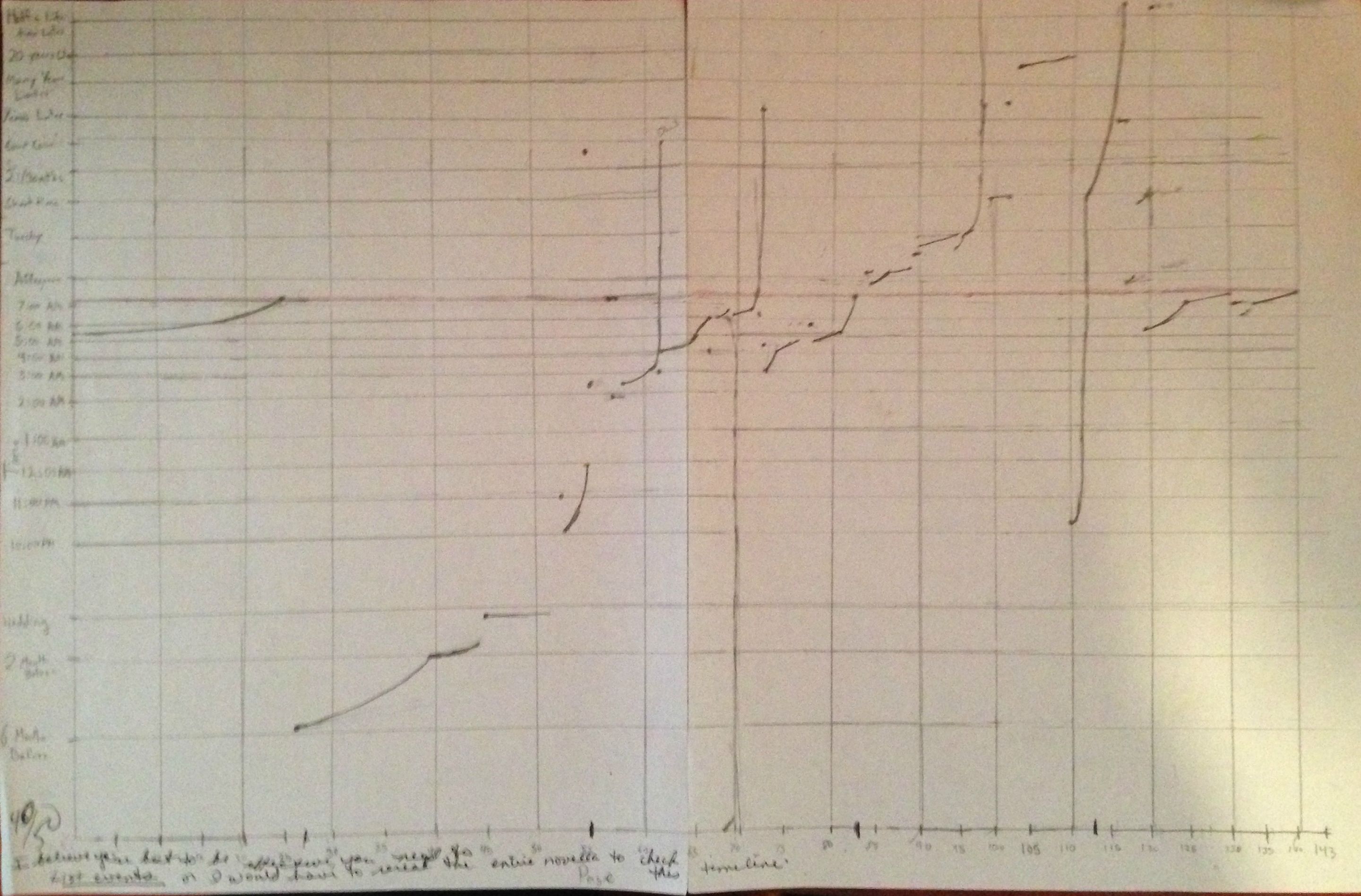In my senior year of high school we read Chronicle of a Death Foretold by Gabriel García Márquez. The narrator acts as an investigator who tries to piece-together what happened to Santiago Nasser. The narrator, and consequently the author, uses time to convey a sense of intensity and rising action. I took the effort one evening to graph the time in the novel against the page number. I have a crude photo of the diagram below.

Each point indicates a specific reference made by the narrator to something which happens at a particular time. The lines connecting two points indicate that the narrator generally continues to the next time (point). When the narrator jumps around the lines become separated.
The diagram allows the reader to visualize how the Marquez uses the order of events discussed to tell the story. In the beginning the narrator speaks chronologically. The long shallow lines indicate that the narrator is taking lots of time to describe a small series of events. The narrator then jumps back in time near page 23. The middle of the book includes the most violent of time shifts. This, coincidentally, is when the reader is most confused and perplexed.
It is difficult to analyze the book in terms of standard plot mechanisms; Marquez reveals the ending in the very first sentence of the book. In general, the entire book is centered around the stabbing of Santiago Nasser. The beginning and ending of the book tell of this time frame. The middle section of the book progresses in a more chronological nature. Thus, giving at least some footing to the title “Chronicle of a Death Foretold”.